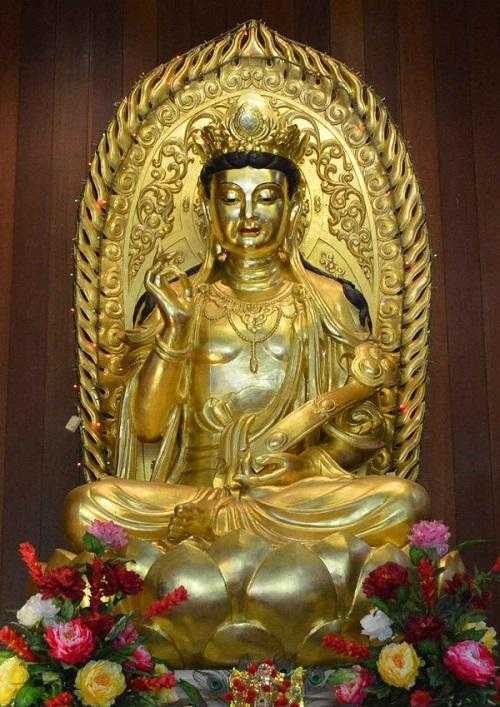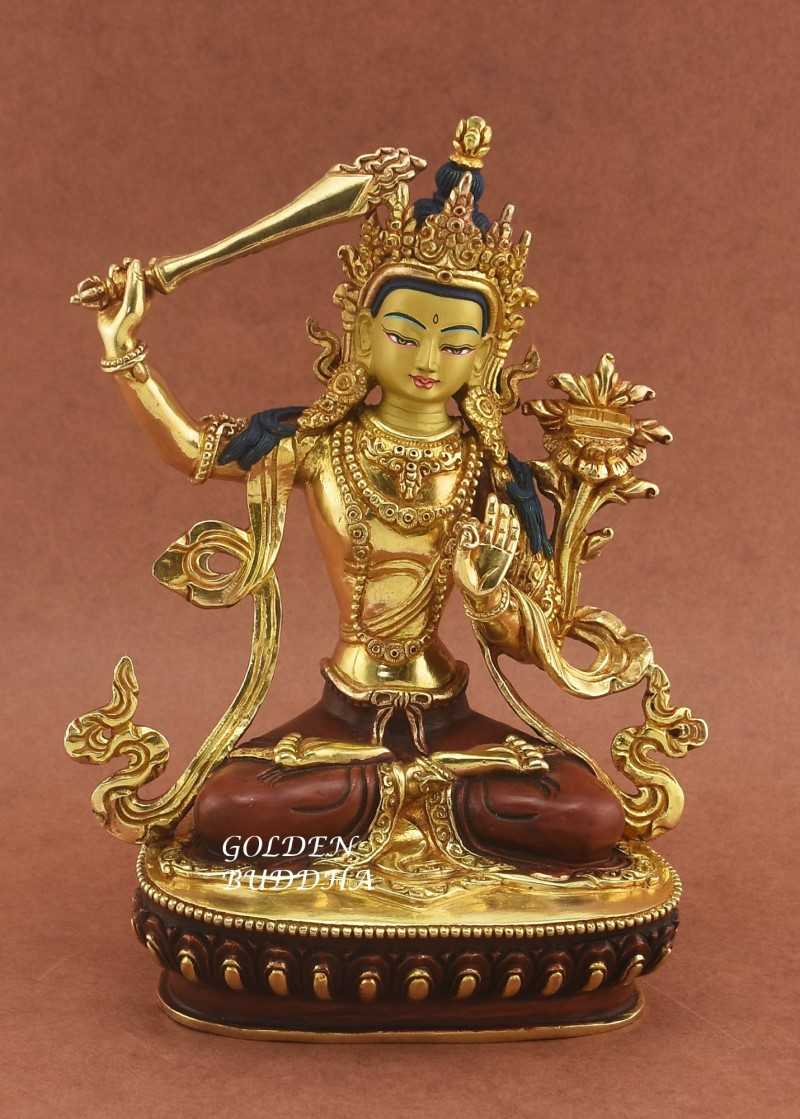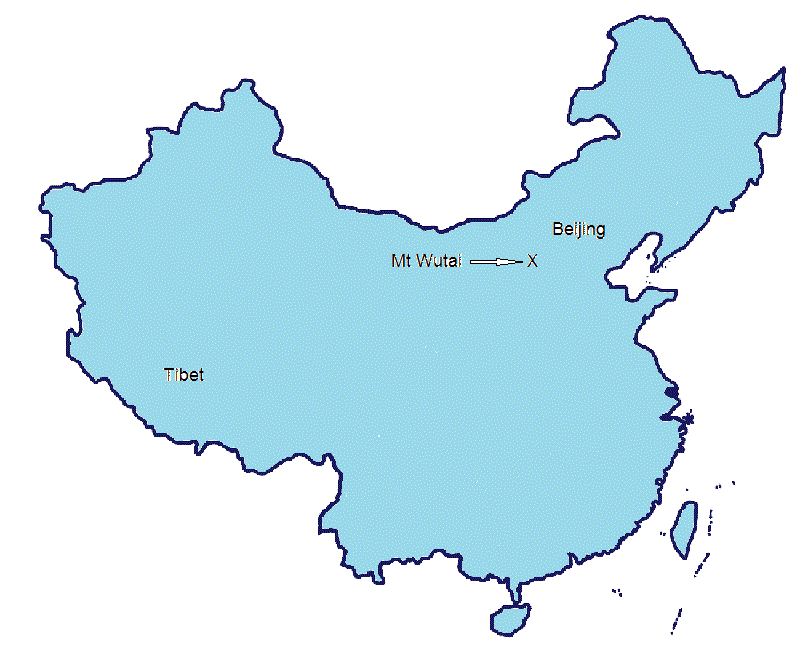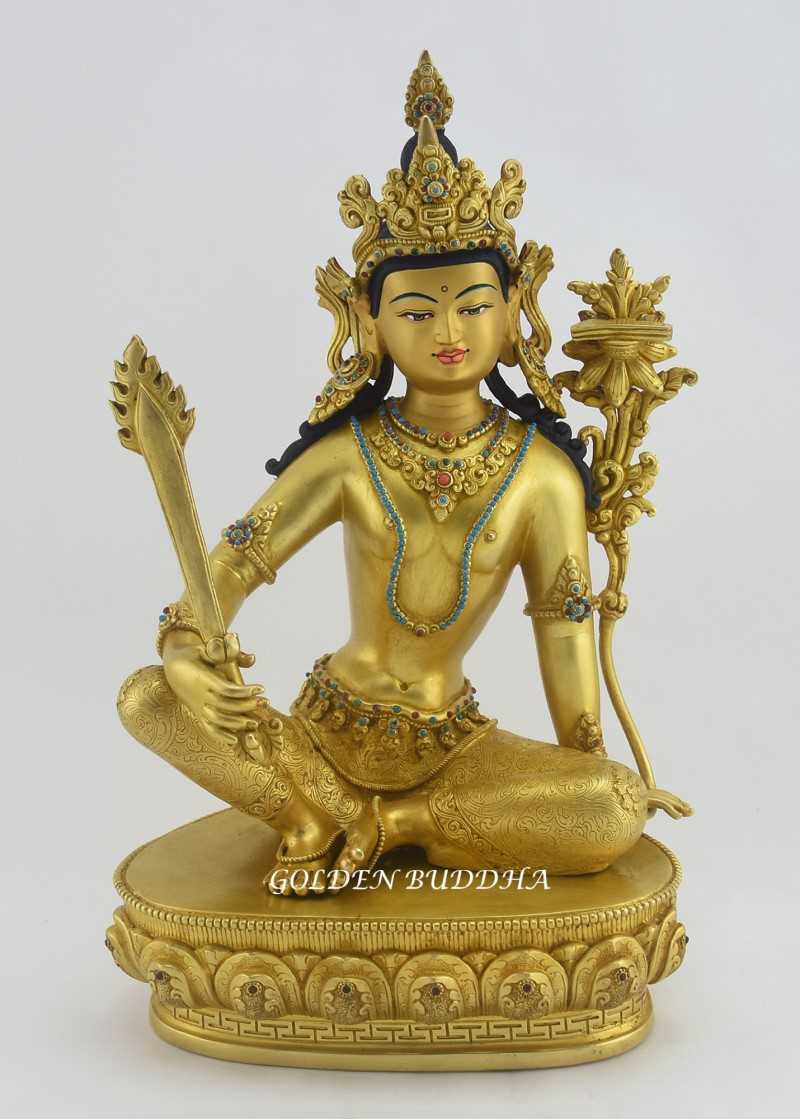Perfected wisdom found inside Manjushri statues is sourced from the Prajnaparamita Sutra. This sutra of “Perfected Wisdom” was completed over a time period of seven centuries between 100 BCE and 600 ACE. Indeed, in Sanskrit prajna means wisdom and paramita means perfection. Additionally, the personification of perfected wisdom – Manjushri – originated from within the Prajnaparamita Sutra. As a result, the Bodhisattva Manjushri holds the Buddhas’ wisdom and he has evolved to become one of the greatest Bodhisattvas of Mahayana Buddhism.
Manjushri is considered to be a high level Bodhisattva similar to Avalokiteshvara. However, the label of Bodhisattva is misleading because it is self imposed by Manjushri’s ten great vows which have yet to be fulfilled. Therefore, he remains a Bodhisattva by choice to become a Buddha in the future.
However, in Tibetan Buddhism he is considered to be a fully enlightened Buddha known as Yamantaka which translates as “destroyer of death”. This means the fully enlightened Buddha has transcended the cycle of rebirth and has therefore defeated death. Yamantaka is a wrathful form of Manjushri, also known as a “yidam” or meditational deity.
Sword of Wisdom
Manjushri’s Pure Land of “Vimala”
Manjushri has a pure land of his own called Vimala. This pure land is one of the most sought after by devotees. As a result, its popularity is similar to Amitabha Buddha’s Sukhavati. Primary differences between these two pure lands is that Sukhavati is a western pure land and Vimala is in the far east.
Indeed, the full splendor Vimala will not come to be until he ultimately fulfills his ten great vows and becomes a fully enlightened Buddha. At that time, Vimala is expected to become one of the most magnificent pure lands.
Nepali Manjushri Statue
Manjushri Statue Meaning
The name “Manjushri” translates from Sanskrit as “gentle glory”. Ironically, Buddhist sculptures and paintings usually depict him holding a flaming sword in his right hand which he is swinging over his right shoulder. However, the Manjushri statue meaning should not be confused with brute force action taken in battle. Instead, it more complex Manjushri symbolism representing the gentle annihilation of ignorance and duality.
Furthermore, Manjushri symbolism depicts his left hand in front of his heart. Also, between his thumb and index finger he is holding the stem of a lotus flower. To emphasize wisdom, the lotus flower grows over his left shoulder with the Prajnaparamita Sutra resting on the blossom.
Alternate depictions of Manjushri show him seated on the back of a blue lion or on a lion skin. The Manjushri lion statue implies that the mind is like a wild beast that can only be tamed with perfected wisdom. Additionally, he is sometimes holding a ruyi scepter instead of a sword. In China, the ruyi is a symbol of good fortune and longevity.
Manjushri Statues with “Ruyi” Scepter

Manjushri Statues Depicts Eternal Youth
This important Bodhisattva is also known by the longer name “Manjusrikumarabhuta”. This longer name means “Manjushri the youth” or “Prince Manjushri”. Therefore, depictions of him tend to be youthful and he can be misperceived as a teenager. Although the real Manjushri story is that he is thousands of years old and is undoubtedly one of the most venerable Bodhisattvas.
The secret to his youthful looks is that wisdom creates new perspectives. As a result, those who acquire transcendent wisdom begin to see the world in new ways and their youthful looks are renewed and preserved.
Youthful Manjushri Statues

Wutai Shan – The Bodhimanda of Manjushri
Mahayana Buddhists believe that Manjushri resides in his bodhimanda that is located on a tall mountain – Wutai Shan – in northern China. A bodhimanda refers to the spot under the Bodhi tree where Gautama Buddha sat in meditation and achieved enlightenment. The meaning is literally “place of enlightenment”.
Indeed, every Bodhisattva will need to occupy this spot before becoming a fully enlightened Buddha. In ancient India, Wutai Shan was first identified with Manjushri in the 7th century ACE.
Unfortunately, the sacred mountain home of Manjushri is off limits to visitors. However, there is a 12th century temple that is a popular destination for devotees. Additionally, some scholars note that the Manchus of the Qing Dynasty often took their name in honor of the Bodhisattva.

Manjushri Mantra
The common Manjushri mantra is as follows: “om arapacana dhih”. However, the Manjushri mantra Tibetan pronunciation is a bit different and it goes:
“Om A Ra Pa Tsa Na Dhih”
Each syllable has an important meaning. The explanation found in the “Sutra of Perfect Wisdom” is very vague and generalized. Fortunately, there is a simplified interpretation available which elaborates on the meaning of the syllables.
Manjushri Mantra Syllable Translation:
OM – This syllable is thousands of years old and has its origins in Hinduism. Additionally, its use is similar to saying “amen” during Christian prayers or “amin” during Muslim ceremonies.
AH – Represents understanding the true nature of phenomenon – emptiness.
RA – This syllable represents knowledge of the emptiness principle.
PA – Represents the 2 types of meditation, Samatha and Vipassana.
TSA – This represents the importance of samsara and nirvana. The master teaches that the precise nature of samsara and nirvana is emptiness. As a result, those who fail to understand the emptiness of samsara will experience suffering due to the misinterpretation of all mental and physical phenomenon.
NA – represents the Buddhist principle that all action has a reaction (karma). Therefore, all good things that happen to us are the results of past wholesome deeds of body, speech and mind. Inversely, all negative things that happen to us are the result of unwholesome deeds of body, speech and mind.
DHIH – this is a seed syllable which can be used to purify karma when it is repeated continuously.
Manjushri Mantra Benefits
The headline Manjushri mantra benefits include enhancement of wisdom, memory, speech and writing. Indeed, students who are pursuing intellectual enhancement will benefit from mantra meditation.
Furthermore, the master concludes by explaining that meditation helps us to gain real experience in following the path. This will help to induce changes in our mind and feelings. As a result, combining wisdom with our actions will enable us to assist sentient beings at the right place and time. Our reward is the happiness and courage we receive by successfully carrying out our virtuous intentions.



